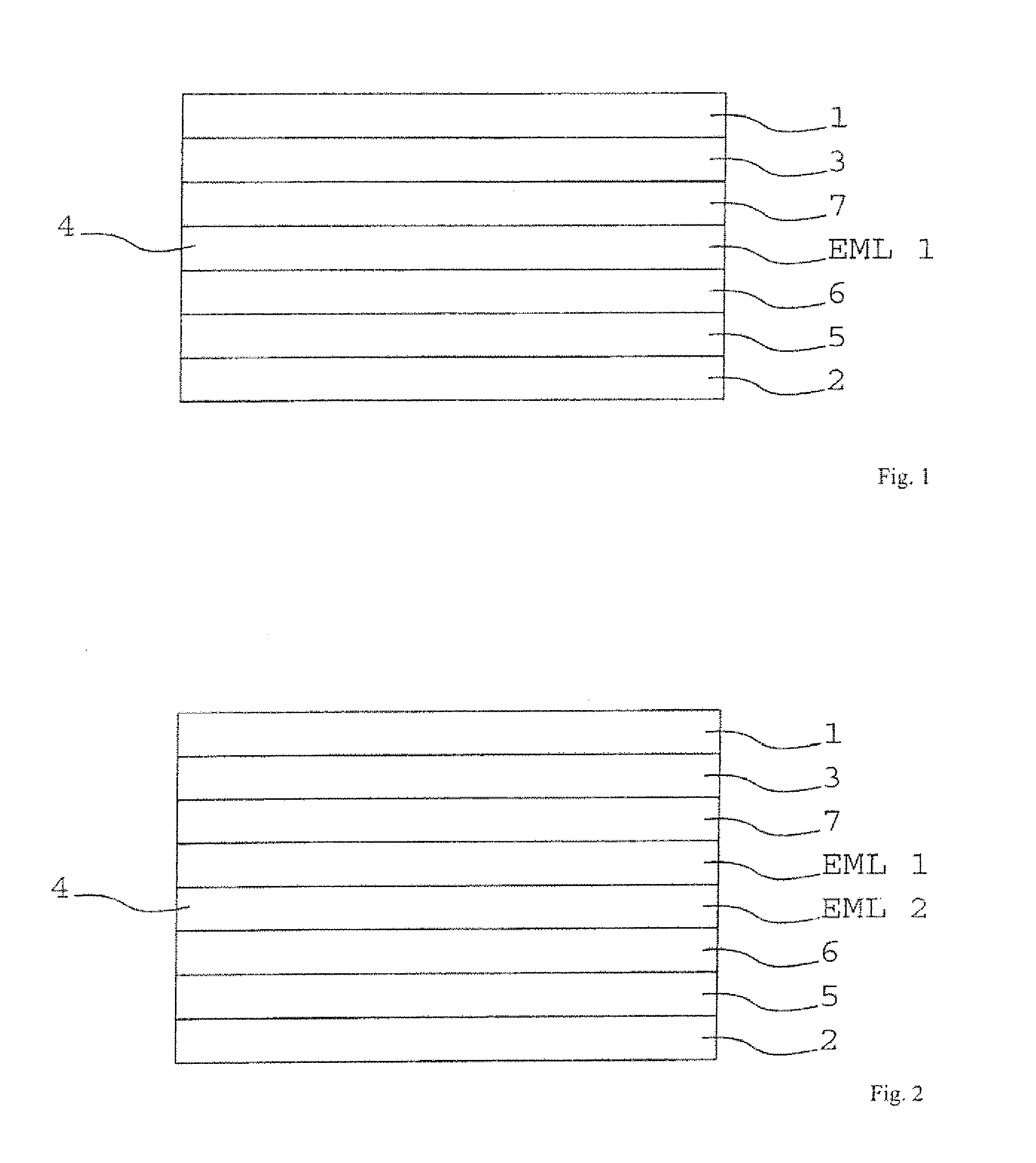Light-Emitting Component and Method for The Production Thereof
a technology of light-emitting components and light-emitting components, which is applied in the direction of electrical equipment, semiconductor devices, organic semiconductor devices, etc., can solve the problems of high light density, large reduction of quantum efficiency, and high accumulation of excitons in their main formation zone, and achieve high efficiency
- Summary
- Abstract
- Description
- Claims
- Application Information
AI Technical Summary
Benefits of technology
Problems solved by technology
Method used
Image
Examples
Embodiment Construction
[0097]In the following, the invention is explained in more detail using exemplary embodiments with reference to figures of the drawing. They show:
[0098]FIG. 1 a schematic illustration of an array of layers of an organic light-emitting component,
[0099]FIG. 2 a schematic illustration of an array of layers of a further organic light-emitting component,
[0100]FIG. 3 a schematic illustration of an array of layers of a further organic light-emitting component,
[0101]FIG. 4 a graphic illustration of the quantum efficiency as a function of the light intensity of a reference luminescent diode according to the prior art and an organic luminescent diode according to the invention,
[0102]FIG. 5 a graphic illustration of an electroluminescence spectrum of the organic luminescent diode according to the invention,
[0103]FIG. 6 a graphic illustration of an electric field distribution of the light emission of an organic light-emitting component with several emission layers with different emission wavele...
PUM
 Login to View More
Login to View More Abstract
Description
Claims
Application Information
 Login to View More
Login to View More - R&D
- Intellectual Property
- Life Sciences
- Materials
- Tech Scout
- Unparalleled Data Quality
- Higher Quality Content
- 60% Fewer Hallucinations
Browse by: Latest US Patents, China's latest patents, Technical Efficacy Thesaurus, Application Domain, Technology Topic, Popular Technical Reports.
© 2025 PatSnap. All rights reserved.Legal|Privacy policy|Modern Slavery Act Transparency Statement|Sitemap|About US| Contact US: help@patsnap.com



